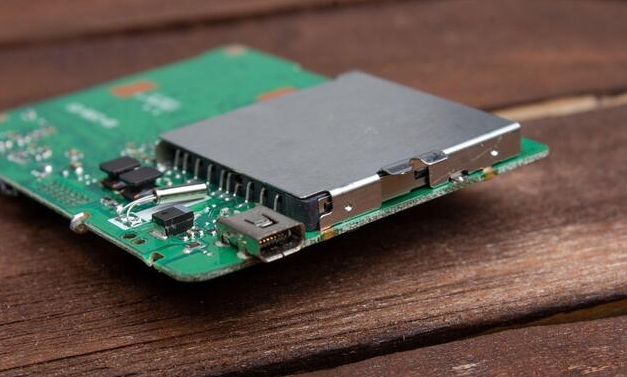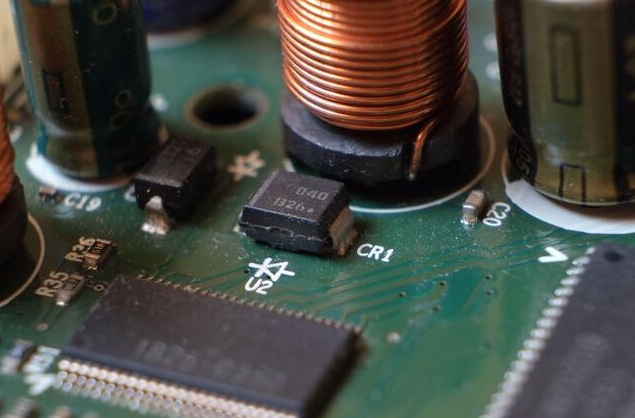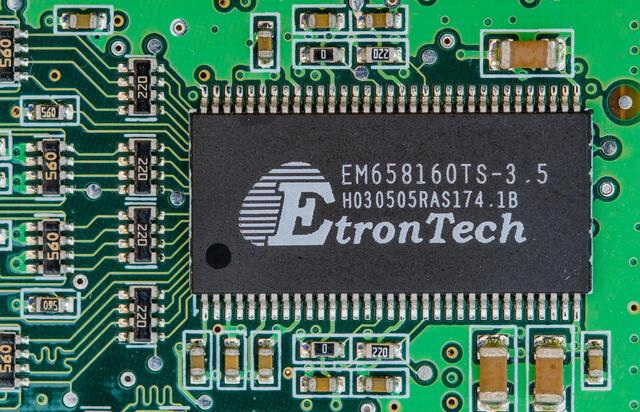Content Menu
● Understanding SMT Nozzle Wear and Tear
● Best Practices for Maintaining SMT Nozzles
>> Regular Cleaning Procedures
>> Implementing a Maintenance Schedule
>> Choosing the Right Nozzle
● Monitoring Nozzle Performance
● Training Operators
● Utilizing Technology
● Environmental Considerations
● Advanced Techniques for Extending Nozzle Life
>> Coating Technologies
>> Predictive Maintenance Strategies
● Conclusion
● FAQ
>> 1. What are some effective methods for cleaning SMT nozzles?
>> 2. How often should SMT nozzles be cleaned?
>> 3. What signs indicate that an SMT nozzle needs replacement?
>> 4. Can operator training impact SMT nozzle lifespan?
>> 5. What type of materials are best for durable SMT nozzles?
Surface Mount Technology (SMT) nozzles are critical components in the electronics manufacturing process, particularly in pick and place machines. These nozzles are responsible for accurately picking up and placing electronic components onto printed circuit boards (PCBs). Given their importance, preventing wear and tear on SMT nozzles is essential for maintaining production efficiency and product quality. This article will explore various strategies to extend the lifespan of SMT nozzles, including maintenance practices, cleaning techniques, monitoring wear, understanding the factors that contribute to nozzle degradation, and exploring advanced technologies that can aid in nozzle preservation.

Understanding SMT Nozzle Wear and Tear
SMT nozzles can experience wear and tear due to several factors:
- Material Fatigue: Repeated use can lead to material fatigue, causing changes in the nozzle's shape and size. Over time, this can result in reduced performance during component placement.
- Debris Accumulation: Dust, solder paste, and other contaminants can accumulate on the nozzle surface, affecting its performance. This build-up can lead to improper component pick-up or placement.
- Improper Handling: Mishandling during cleaning or replacement can cause physical damage to the nozzle. Operators must be trained to handle nozzles carefully to prevent accidental drops or impacts.
- Inadequate Maintenance: Lack of regular maintenance can lead to decreased performance over time. Without routine checks and cleaning, nozzles may become less effective at their job.
Recognizing these factors is the first step in implementing effective prevention strategies.
Best Practices for Maintaining SMT Nozzles
Regular Cleaning Procedures
Cleaning is one of the most crucial aspects of maintaining SMT nozzles. Here are some effective cleaning practices:
- Ultrasonic Cleaning: This method uses high-frequency sound waves to agitate a cleaning solution, effectively removing dirt and solder residues from nozzles. Ultrasonic cleaners can reach areas that manual cleaning might miss. This process is particularly useful for nozzles with complex geometries where debris can get trapped.
- Manual Wiping: Using fine materials or lint-free cloths to wipe the nozzle can prevent debris build-up. It's essential to use non-corrosive cleaning solutions to avoid damaging the nozzle surface. Operators should be trained on the proper technique for manual wiping to ensure thorough cleaning without scratching or damaging the nozzle.
- High-Pressure Air Blowing: After cleaning, using high-pressure air can help remove any remaining particles from the nozzle. This step ensures that all contaminants are expelled before the nozzle is returned to service.
Implementing a Maintenance Schedule
Establishing a regular maintenance schedule is vital for preventing nozzle wear:
- Daily Inspections: Check nozzles for visible signs of wear or damage before each production run. Look for cracks, chips, or changes in shape that could affect performance.
- Routine Cleaning: Depending on usage frequency, clean nozzles daily or weekly. High-volume production may require more frequent cleaning. Keeping a log of cleaning activities can help track maintenance efforts and identify patterns in wear.
- Replacement Protocol: Set criteria for when to replace nozzles based on performance metrics such as component placement accuracy and vacuum retention. Establishing a clear protocol helps ensure timely replacements before performance degrades significantly.
Choosing the Right Nozzle
Selecting the appropriate nozzle for specific components is crucial:
- Nozzle Size and Shape: Ensure that the nozzle matches the size and shape of the components being placed. Using an incorrect nozzle can lead to increased wear and tear due to improper fit during operation.
- Material Selection: Consider nozzles made from durable materials such as ceramics or specialized plastics that resist wear better than standard materials. Advanced materials may provide better thermal stability and resistance to chemical exposure from solder pastes.
Monitoring Nozzle Performance
Keeping track of nozzle performance can help identify issues before they become significant problems:
- Vacuum Pressure Monitoring: Regularly check vacuum pressure levels during operation. A drop in vacuum pressure may indicate wear or blockage in the nozzle. Monitoring systems can be integrated into machines to provide real-time feedback on vacuum performance.
- Placement Accuracy Tracking: Monitor component placement accuracy throughout production runs. Consistent misalignment may signal that a nozzle needs maintenance or replacement. Automated systems often include features that track placement accuracy metrics over time.
- Wear Measurement: Use tools to measure nozzle tip length over time. A decrease in length may indicate excessive wear that necessitates replacement. Some manufacturers provide measurement tools specifically designed for this purpose.

Training Operators
Proper training for machine operators is essential for effective nozzle maintenance:
- Handling Procedures: Train operators on how to handle nozzles carefully during installation and cleaning to prevent damage. Emphasizing gentle handling techniques can reduce accidental drops and impacts.
- Identifying Issues: Equip operators with knowledge about common signs of wear and how to address them promptly. Regular training sessions can reinforce best practices and keep operators informed about new technologies or methods.
Utilizing Technology
Incorporating technology can streamline maintenance processes:
- Automated Cleaning Systems: Invest in automated cleaning systems that can clean multiple nozzles simultaneously, reducing downtime and labor costs. These systems often include programmable settings tailored to specific nozzle types.
- Monitoring Software: Use software solutions that track nozzle performance metrics, alerting operators when maintenance is due or when replacements are necessary. Such software can provide valuable insights into trends in wear over time, allowing for proactive management of maintenance schedules.
Environmental Considerations
The environment in which SMT machines operate also plays a significant role in nozzle longevity:
- Dust Control Measures: Implementing dust control measures within the production facility can reduce debris accumulation on nozzles. This might include air filtration systems or regular cleaning schedules for workspaces.
- Temperature and Humidity Control: Maintaining optimal temperature and humidity levels helps prevent condensation build-up on machinery, which could lead to corrosion or other issues affecting nozzle performance.
Advanced Techniques for Extending Nozzle Life
In addition to standard practices, several advanced techniques can further enhance the longevity of SMT nozzles:
Coating Technologies
Applying specialized coatings to SMT nozzles can significantly improve their resistance to wear and contamination:
- Hard Coatings: Coatings such as titanium nitride (TiN) or diamond-like carbon (DLC) enhance surface hardness and reduce friction during operation. These coatings help maintain the original dimensions of the nozzle longer than uncoated alternatives.
- Anti-Adhesive Coatings: These coatings minimize solder paste adhesion on nozzle surfaces, making it easier to clean them after use. Reducing adhesion not only simplifies maintenance but also improves overall efficiency by minimizing downtime related to cleaning.
Predictive Maintenance Strategies
Utilizing predictive maintenance strategies involves using data analytics and historical performance data to predict when maintenance should occur:
- Data Collection Systems: Implement systems that collect data on operational parameters such as temperature, pressure, and usage frequency of each nozzle type. Analyzing this data helps identify patterns that precede failures.
- Machine Learning Algorithms: Employ machine learning algorithms that analyze historical data trends to forecast potential failures before they happen. This proactive approach allows manufacturers to schedule maintenance at optimal times without disrupting production schedules.
Conclusion
Preventing SMT nozzle wear and tear is crucial for maintaining high efficiency and quality in electronics manufacturing. By implementing regular cleaning practices, establishing a maintenance schedule, selecting appropriate nozzles, monitoring performance, training operators, utilizing technology, considering environmental factors, employing advanced techniques like coating technologies, and adopting predictive maintenance strategies, manufacturers can significantly extend the lifespan of their SMT nozzles. These proactive measures not only enhance production efficiency but also reduce costs associated with downtime and defective products.

FAQ
1. What are some effective methods for cleaning SMT nozzles?
Effective methods include ultrasonic cleaning, manual wiping with lint-free cloths, and using high-pressure air blowing after cleaning.
2. How often should SMT nozzles be cleaned?
The frequency of cleaning depends on usage; however, it is recommended to clean them daily or weekly based on production volume.
3. What signs indicate that an SMT nozzle needs replacement?
Signs include visible wear or damage (cracks or chips), decreased vacuum pressure during operation, and consistent misalignment during component placement.
4. Can operator training impact SMT nozzle lifespan?
Yes, proper training ensures that operators handle nozzles correctly during installation and maintenance, which helps prevent damage and extends their lifespan.
5. What type of materials are best for durable SMT nozzles?
Nozzles made from ceramics or specialized plastics are recommended due to their resistance to wear compared to standard materials.




















